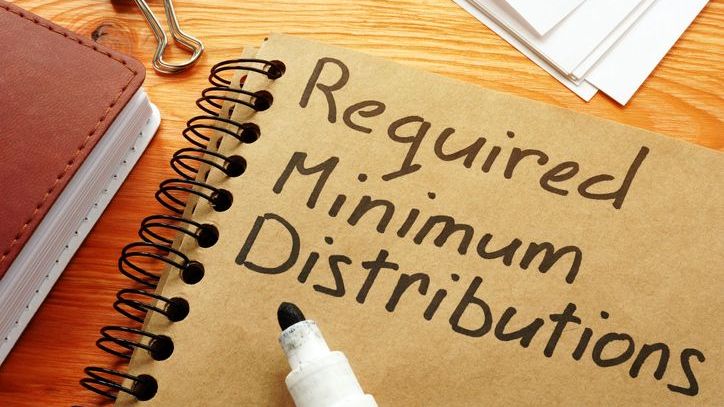Many retirees wonder if they can take their required minimum distributions (RMDs) and move them into a Roth IRA. The IRS does not allow RMD amounts to be converted directly, since those withdrawals must be taken as taxable income. What you can do, however, is withdraw the required amount and then convert additional funds from your traditional IRA or 401(k) into a Roth. Understanding this distinction helps clarify why RMDs themselves can’t be converted, but Roth conversions may still be possible beyond the required withdrawal.
A financial advisor can help you plan for RMDs and figure out if a Roth conversion is right for you. Connect with an advisor who serves your area.
What Are RMDs?
Starting at age 73 (75 if you were born in 1960 or later), the IRS requires you to begin withdrawing a minimum amount each year from your pre-tax retirement accounts, such as 401(k) plans and IRAs. The exact amount depends on your age and the amount in your portfolio. To calculate your RMD, you divide the portfolio’s balance at the end of the previous year by a published life expectancy factor.
You can use SmartAsset’s RMD Calculator to estimate how much you’ll need to withdraw from your retirement accounts once you reach RMD age.
Required Minimum Distribution (RMD) Calculator
Estimate your next RMD using your age, balance and expected returns.
RMD Amount for IRA(s)
RMD Amount for 401(k) #1
RMD Amount for 401(k) #2
About This Calculator
This calculator estimates RMDs by dividing the user's prior year's Dec. 31 account balance by the IRS Distribution Period based on their age. Users can enter their birth year, prior-year balances and an expected annual return to estimate the timing and amount of future RMDs.
For IRAs (excluding Roth IRAs), users may combine balances and take the total RMD from one or more accounts. For 401(k)s and similar workplace plans*, RMDs must be calculated and taken separately from each account, so balances should be entered individually.
*The IRS allows those with multiple 403(b) accounts to aggregate their balances and split their RMDs across these accounts.
Assumptions
This calculator assumes users have an RMD age of either 73 or 75. Users born between 1951 and 1959 are required to take their first RMD by April 1 of the year following their 73rd birthday. Users born in 1960 and later must take their first RMD by April 1 of the year following their 75th birthday.
This calculator uses the IRS Uniform Lifetime Table to estimate RMDs. This table generally applies to account owners age 73 or older whose spouse is either less than 10 years younger or not their sole primary beneficiary.
However, if a user's spouse is more than 10 years younger and is their sole primary beneficiary, the IRS Joint and Last Survivor Expectancy Table must be used instead. Likewise, if the user is the beneficiary of an inherited IRA or retirement account, RMDs must be calculated using the IRS Single Life Expectancy Table. In these cases, users will need to calculate their RMD manually or consult a finance professional.
For users already required to take an RMD for the current year, the calculator uses their account balance as of December 31 of the previous year to compute the RMD. For users who haven't yet reached RMD age, the calculator applies their expected annual rate of return to that same prior-year-end balance to project future balances, which are then used to estimate RMDs.
This RMD calculator uses the IRS Uniform Lifetime Table, but certain users may need to use a different IRS table depending on their beneficiary designation or marital status. It's the user's responsibility to confirm which table applies to their situation, and tables may be subject to change.
Actual results may vary based on individual circumstances, future account performance and changes in tax laws or IRS regulations. Estimates provided by this calculator do not guarantee future distribution amounts or account balances. Past performance is not indicative of future results.
SmartAsset.com does not provide legal, tax, accounting or financial advice (except for referring users to third-party advisers registered or chartered as fiduciaries ("Adviser(s)") with a regulatory body in the United States). Articles, opinions and tools are for general informational purposes only and are not intended to provide specific advice or recommendations for any individual. Users should consult their accountant, tax advisor or legal professional to address their particular situation.
For any given year that you don’t take the full distribution, the IRS will charge you a tax penalty of either 25% of the amount that’s not withdrawn. For example, say that you don’t withdraw a required $10,000. You could face a tax penalty of up to $2,500. If you correct the RMD within two years, the IRS drops the penalty to 10%.
The IRS requires you to take RMDs from tax-deferred accounts because each withdrawal is a tax event that triggers income taxes. Since you’ve already paid taxes on the money in Roth accounts, the IRS doesn’t require you to take minimum distributions from them. But if you have additional questions surrounding RMDs, consider speaking with a financial advisor.
Can You Invest RMDs in a Roth IRA?

For some retirees, the problem with an RMD is that they don’t need the money yet. This comes up, particularly for people who already have sufficient income streams or those who hold multiple accounts and want to draw them down one at a time.
While you have several options for how to manage these distributions, you cannot reinvest them in a Roth IRA.
Roth IRA Requirements
You can only make IRA contributions with what’s called “earned income.” This is defined as money that you receive from wages, salary, contract income and other forms of work. You cannot make contributions to an IRA (whether its a traditional or Roth account) from investment proceeds, capital gains or many passive income streams like rental properties.
This means that you’re free to get a job in retirement and put that money into a Roth IRA for later in life. However, you cannot withdraw money from a portfolio and transfer it into a Roth IRA or any other form of tax-advantaged retirement account. The IRS discusses this restriction in full in Publication 590-A.
Conversions Are Also Restricted
This subject can get confusing because of the overlap between a withdrawal and a conversion. When you have a pre-tax portfolio, like a 401(k) or traditional IRA, you are allowed to move money directly into a Roth IRA in what’s called a conversion. You take out a lump sum of money from a tax-deferred account, pay income taxes on the amount and deposit it into the Roth IRA.
However, the IRS specifically prohibits you from converting any required distributions into a Roth IRA. You can convert money that isn’t a required distribution, but the law is unambiguous that you cannot do so with an RMD. Navigating the IRS rules for RMDs and Roth conversions can be confusing, which is way you may want to consider connecting with a financial advisor.
Alternative Options for Roth IRAs and Required Minimum Distributions

So, what should you do instead? For retirees, there are a couple of options for how to manage RMDs.
First, you can convert the rest of your pre-tax portfolio after you meet the RMD requirements. In any year with an RMD, the first dollars you withdraw from that account are treated as part of your RMD. Once you meet the minimum amount, you’re free to convert the rest of your account (in whole or in part) into a Roth.
Say you have a $10,000 RMD in a given year. You first must withdraw that $10,000 before you may convert any remaining, eligible amount in your retirement account to a Roth IRA. As always, when doing so remember that Roth earnings have a five-year cooling-off period, so make sure you won’t need this money right away. And if you withdraw any of the money you convert before the five-year period is up, you could owe a 10% penalty on the money (unless you’re age 59 ½ or older).
Second, it is common for retirees to reinvest their minimum distributions. While you can’t put this money back into a tax-advantaged retirement account, you can put it into a taxable investment portfolio. The exact nature of these investments will vary based on your financial strategy and needs. Some retirees may do well investing for growth, taking money that they don’t need and putting it into equity-heavy funds. Others may do well investing for security, taking money that they will need someday and putting it into bond-heavy funds or annuities.
But if you need additional help reinvesting your RMDs, a financial advisor can help you make a plan to put this money to work for you.
Bottom Line
You cannot reinvest required minimum distributions directly into a Roth IRA. While you can convert any remaining amount from your pre-tax retirement account, the IRS specifically prohibits you from putting RMD funds in a tax-advantaged portfolio. However, RMDs don’t need to be the end of your investing. You are free to invest this money in a taxable account as you see fit or convert your remaining IRA or 401(k) funds into a Roth account after your RMD for the year has been met.
Tips on Managing Required Minimum Distributions
- The RMD formula can be difficult to manage, mostly because the IRS’ “life expectancy factor” can seem very arbitrary on the surface. But figuring out what you will need to withdraw is an important piece of long-term retirement planning puzzle.
- A financial advisor can help you plan for and manage your RMDs. Finding a financial advisor doesn’t have to be hard. SmartAsset’s free tool matches you with vetted financial advisors who serve your area, and you can have a free introductory call with your advisor matches to decide which one you feel is right for you. If you’re ready to find an advisor who can help you achieve your financial goals, get started now.
Photo credit: ©iStock.com/Fly View Productions, ©iStock.com/designer491, ©iStock.com/SDI Productions
